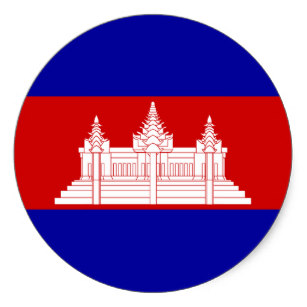Working Group Report on Regional Cooperation on
Disaster Management in East Asia
Introduction
On March 11, 2011, a catastrophic earthquake of magnitude 9.0 struck off the coast of Eastern Japan. The earthquake and the tsunami that followed it devastated villages and towns in Eastern Japan, leaving a total of 21,000 people dead or missing (as of 10 July 2011). In addition, the quake and the tsunami caused severe damages to the Fukushima Dai-ichi nuclear power station, causing a stoppage in power supply as well as nuclear radiation concerns. In addition to the damages caused by the quake and tsunami, the power stoppage and nuclear radiation are causing serious damages to the Japanese economy.
The occurrences of great disasters have brought about a colossal number of victims not only in Japan but in other countries in East Asia as well. In December, 2004, “The Sumatra Earthquake”- a giant earthquake of magnitude 9.3 with an epicenter off the southwest coast of Sumatra in the Indian Ocean- struck, resulting in a disastrous tsunami. The unprecedented disaster affected people in twelve countries including Indonesia, Thailand, Malaysia, Myanmar, Bangladesh, India, and Sri Lanka, resulting in a figure of over 280,000 people dead or missing. Large-scale natural disasters have occurred successively in Asia following the Sumatra Earthquake and Tsunami; a great earthquake in Pakistan in 2005 killed around 80,000 people; in 2008 the great Myanmar flood swept through the country, leaving over 130,000 casualties. That same year a huge earthquake hit Sichuan, China, killing approximately 90,000.
The UN World Conference on Disaster Reduction was earlier held in Kobe in 2005, and adopted the Hyogo Framework for Action 2005-2015: Building the Resilience of Nations and Communities to Disasters. The “Hyogo Framework for Action (HFA) 2005 – 2015” resolves to pursue the substantial reduction of disaster losses, including human casualties as well as in the social, economic and environmental assets of communities and countries. According to the “Hyogo Framework for Action,” the most prioritized actions are (1) Governance: organizational, legal and policy frameworks (2) Risk identification, assessment, monitoring and early warning (3) Knowledge management and education (4) Reducing underlying risk factors (5) Preparedness for effective response and recovery. These five fields should be further promoted in East Asia through effective disaster management cooperation.
On August 30-31, 2010, the “ASEAN Plus Three International Conference on Disaster Management” was convened in Tokyo, with the participation of officials and academic experts from the ASEAN Plus Three countries and observer countries such as India and Australia as well as other international organizations. In the meeting, several proposals were suggested, such as to encourage each ASEAN Plus Three country to further strengthen regional cooperation on disaster management by sharing information, expertise and technologies as well as allocating necessary resources with appropriate priorities. The Meeting reviewed the progresses and challenges in the first decade of the Hyogo Framework for Action 2005 – 2015 in the region and identified new challenges in the next half decade of the Hyogo Framework for Action through discussion.
With the above background, the NEAT Working Group (WG) on “Regional Cooperation on Disaster Management” was held in Tokyo, Japan on 7 July 2011. The objective of the meeting was to promote mutual understanding on the current situation and the future challenges of regional cooperation in disaster management, thereby developing concrete and feasible policy recommendations to be submitted to the ASEAN Plus Three Summit. Twenty experts from ASEAN+3 member countries, the ASEAN Secretariat and the sponsoring organization, the Japan Forum on International Relations (JFIR), took part in the WG meeting. The WG meeting began with opening introductory remarks by Amb. HIRABAYASHI Hiroshi, Vice President of JFIR, and Dr. OKAZAKI Kenji, Professor of National Graduate Institute for Policy Studies (GRIPS), followed by three topical sessions as follows and a wrap–up session.
(1) Session 1 “Growing Issues on Disaster Management in East Asia”
(2) Session 2 “Disaster Risk Assessment and Preparedness”
(3) Session 3 “Governance and Regional Cooperation for Disaster Management”
Discussions on Regional Cooperation on Disaster Management
1. Session 1 on “Growing Issues on Disaster Management in East Asia”
East Asia is highly prone to natural disasters such as floods, typhoons/cyclones, earthquakes, and tsunamis and a great number of people are killed or severely impacted by the disasters every year. Unprecedented disasters have likewise been occurring in recent years in several East Asian countries. The impacts of the disasters are contingent on the economic and social conditions of the communities and country. This session discussed recent natural disasters in some countries in order to promote mutual understanding on the current situation and future challenges of disaster management.
2. Session 2 on “Disaster Risk Assessment and Preparedness”
Disaster risk assessment is the first step of disaster management. When the stakeholders understand their own risk from natural disasters, they would be able to prepare for the impacts of natural disasters. The government officials should understand how their country is vulnerable to disasters in order to decide the appropriate safety level of infrastructure and buildings. The homeowners should understand how their houses are vulnerable to natural disasters in order to decide the safety level of their houses. This session discussed methodologies and policies for disaster risk management and how the assessment results are reflected in preparedness.
3. Session 3 on “Governance and Regional Cooperation for Disaster Management”
For effective disaster management, each country should make commitments and promote institutionalization for disaster management at a multi-disciplinary basis. A large natural disaster may affect several countries at the same time, and the impacts of the disaster may affect surrounding countries. Once a large disaster occurs, neighboring countries would extend their hands for response, recovery, and reconstruction assistance. In East Asia, where many countries share similar hydrometeorogical and geological hazards and similar social and economic conditions, it is expected that the regional cooperation for disaster management will be very effective and efficient. Thus, this session discussed governance issues in disaster management for various countries and future challenges for the regional cooperation in disaster management in East Asia.
4. Summary of discussions and proposals
The participants introduced recent disasters, outlined general causes of disasters including increasing risks as a result of unsustainable economic growth and effects of global climate as well as lessons learned from their respective countries for mutual understanding. Of more significance, disaster management systems were extensively discussed: the economic, social and physical aspects of disaster management, structural measures such as the use of early warning systems, development of hazard maps, etc and non-structural measures, such as disaster education, evacuation drill as well as the disaster management cycle namely emergency response, and recovery/reconstruction. Particularly, the Japanese experts pointed out to the damages encountered, recovery and reconstruction processes undertaken, and some lessons of the Great East Japan Earthquake Disaster on 11 March 2011.
Disaster management system should address all the disaster phases of prevention and mitigation, preparedness, emergency response, recovery and rehabilitation. Very often, the phases of the cycle overlap and length of each phase depends on the severity of disaster (or expected disaster). The Hyogo Framework for Action particularly pointed out to the importance of “mitigation” for disaster reduction. In this respect, the idea of “resilience” as a pro active stance towards risks was added emphasis during the discussion.
The discussion also recognized that although many countries face similar hazards (or disasters), actual vulnerability to risk is uneven across the region as well as within countries. Governance, infrastructure, economic development/poverty, existing level of capabilities were some of the factors highlighted in terms of vulnerability. What is important is the need to “self-manage” as far as possible. Therefore at the national level, with clear roles and responsibilities of the national and local governments, the relevant stakeholders of the public and private sectors should cooperate in implementing the various disaster countermeasures.
At the regional level, the ASEAN Secretariat and other participants also highlighted the trend of natural disasters within the region and the national, regional and international initiatives for disaster reduction. Most deadly disasters occur in Asia and these catastrophes are seemingly increasing. More than 1,200 disasters have caused 415,000 deaths in East Asia from 1970-2009.
With regard to the possible regional cooperation for disaster reduction, various issues were discussed as follows.
-
Utilization of modern technologies such as internet, mobile phones etc., which led to a dramatic increase of public expectations regarding managing risk, responding to disasters, and information-sharing.
-
Improvement of forecast and early warning with modern technology.
-
As the local governments and communities are primarily responsible for disaster management, motivation of local governments and communities is essential.
-
Uneven growth of civil society across the region.
-
Donor funding and the need to manage quick-response funds.
-
Role of national military forces in responding to disasters, role of Red Cross and Red Crescent Societies as intermediaries, and the interaction between scientists and practitioners.
-
The role of the business community was questioned.
-
Preparation for unpredictable disasters, including those with extremely low occurrence probability but extremely high impact.
-
Coordination of international assistance and domestic civil affairs.
-
Strengthening of existing regional initiatives such as the ASEAN Agreement on Disaster Management and Emergency Response (AADMER) and its Work Plan (2010-2015), AHA Center, Joint Declaration on ASEAN Defense Ministries on Strengthening ASEAN Defense Establishments.
-
Reaffirmation of Japan’s commitment to lead the cooperation in East Asia, as suggested by the ASEAN Plus Three Summit in 2010.
Based on the discussions, some proposals for regional cooperation were made as follows.
-
There is a need for more integrated and comprehensive approaches on disaster management at the regional level. This can be achieved by linking regional economic, security, military, scientific, resource management cooperation, and by strengthening the current cooperative framework on climate change and disaster management. Information sharing on disasters and early warning, capacity building on disaster management and environmental impact assessment would all be critical for regional cooperation in disaster management. It was also proposed to strengthen and extend cooperation in search and rescue, disaster relief, and reconstruction at the regional level.
-
In order to motivate local stakeholders to take action and invest in disaster reduction, assessment and understanding of the risk, Community-based disaster management (CBDM) would be necessary In terms of regional cooperation, the need to build capacity of the local governments and communities was proposed through developing disaster scenarios and action plans (to be replicated in several pilot cities in the region).
-
Promote joint research and training, regular disaster and emergency response exercise, and coordination in the region.
-
Encourage dissemination of information and sharing mechanism, transfer of technology, capacity building, financial and technical assistance in the region.
-
Promote community-based projects and strengthen the role of the National Disaster Management Office for better preparedness and response during a disaster.
-
Develop action plans, operational regulations and procedures to cope with catastrophic disasters.
-
Make more efforts on reinforcing existing mechanisms and mobilizing as well as utilizing limited resources to address the disaster issues.
-
Build capacity and develop human resources.
Policy Recommendations for Regional Cooperation
Based on the discussions above, the NEAT WG on “Regional Cooperation on Disaster Management in East Asia” summarized the following recommendations;
1. Improve and strengthen existing schemes and initiatives for regional cooperation such as AADMER and bilateral international cooperation for disaster reduction and climate change.
2. Explore possibilities for more integrated and comprehensive approaches to disaster management at the regional level.
3. Encourage information sharing on early warning and appropriate technologies, technology transfer, and financial and technical assistance for disaster reduction in the region.
4. Strengthen and extend cooperation and coordination in search and rescue, disaster relief, and reconstruction at the regional level. Particularly, strengthen capacity for coordination between international assistance and domestic response activities in the disaster-stricken areas.
5. Promote joint research, training, and emergency response exercises and encourage capacity building and development of human resources in the region.
6. Implement a regional pilot project to build the capacity of local governments and communities in several pilot cities in the region through developing disaster scenarios and action plans through community based disaster activities.
7. It is expected that the Japanese Government should lead the regional cooperation as stated above, and suggested by the ASEAN Plus Three Summit in 2010.











.png)



.png)




